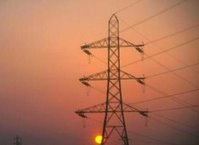Here is an interesting piece written by Paul E. Schoen of P S Technology, Inc.
There is some more information [regarding the resistance of a human body] at
http://van.physics.uiuc.edu/qa/listing.php?id=6793 , where it states that the external human body resistance is about 1k to 100k Ohms, and the internal resistance is 300 to 1000 ohms. Only a thin layer of dry skin separates the internal resistance from an external object.
The human body capacitance to a far ground is 100-200 pF, which is really a minimum value. This correlates to an impedance of about 13 megohms at 60 Hz, which corresponds to a minimum of 9 uA at 120 VAC to ground. This is enough to be sensed and used for capacitively operated light dimmers.
Here is a way to measure your body capacitance:
http://web.mit.edu/Edgerton/www/Capacitance.htmlThe inside of your body can be considered a conductor, and thus if you place your hand flat on a metal plate, you will form a capacitor with an area of perhaps 15 square inches, with a thin (maybe 0.005”) insulating layer of dry skin, which will form a capacitor much higher in value than the 200 pF stated above. According to a formula in
http://www.sayedsaad.com/fundmental/11_Capacitance.htm , this would be C = 0.2249 * k * A / d = 1350 pF, (assuming k for skin is 2, about like dry paper). This will be an impedance of about 2 megohms , and current of 60 uA. This is still below the normal threshold of sensation, and still far below the usual safe current levels of 1 to 5 mA.
The actual thickness of the epidermis (per
http://dermatology.about.com/cs/skinanatomy/a/anatomy.htm ) varies from 0.05 mm (0.002”) for eyelids to 1.5 mm (0.06”) for palms and soles, but the actual outer layer of the epidermis that is a good insulator is composed of flat, dead cells, which is much thinner. So the capacitance could be much higher than the quick estimate above.
Probably the main reason for electrical current to reach levels high enough for electrocution to occur (6 to 200 mA for 3 seconds, according to
http://www.codecheck.com/ecution.htm ), is when skin becomes sweaty or otherwise loses its dry protective layer, which quickly exposes the underlying 1000 ohms or less, which will conduct 120 mA at 120 VAC.
There are safe ways to measure the body’s resistance and capacitance using realistic higher voltages, skin conditions, and contact surfaces, but I’m not going to suggest anyone try it. Suffice it to say that ohmmeter readings are misleading, and any carelessness around any kind of voltage source can be dangerous.
For very high voltages, there are standard minimum distances that must be maintained between a worker and an energized line:
http://www.dir.ca.gov/oshsb/rubberglove.html . I found this on a search for rubber glove testing.
The field intensity near high voltage lines is so great that it might be fatal to touch them even if you were suspended in free air. You may notice that birds can sit on lower voltage transmission lines which are 5kV to 50 kV or so, but not on 200kV+ lines.
Labels: electrical shock, high voltage, high voltage safety, high voltage spacing

